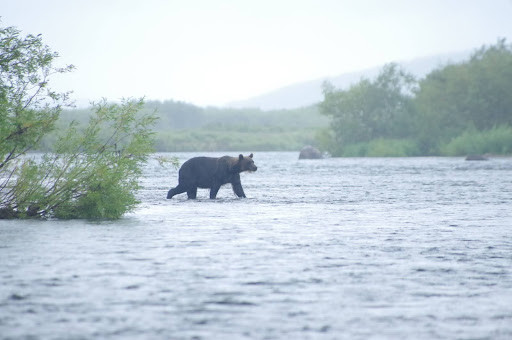
The sport of fly fishing is often romanticized as a serene connection between human and nature. But few realize the fine line that exists between enjoyment and exploitation in those pristine ecosystems. For expert fly fisherman William Blair, the future of the industry hinges on one very much essential element: conservation. Will, a seasoned angler with decades of experience across the globe, has made it his mission to advocate for wildlife preservation, transforming how fishing enthusiasts view their impact on the environment.
"Conservation is not an afterthought – it's the starting point," Will explains. His commitment to preserving fish populations and aquatic ecosystems is more than a philosophy; it's a responsibility that defines his approach to guiding and sport fishing. "When you touch a place, you have to think from day one: how am I not going to damage this place? It's a question every guide and fisherman should be asking."
The consequences of unsustainable fishing practices are dire. Overfishing not only depletes fish populations but can also alter the entire ecosystem of a region. Will points to Alaska's Alagnak River as a cautionary tale. Once teeming with native Rainbow Trout, the river's fishery was nearly extirpated by overfishing in the early 1990s. "It might take generations of conservation efforts to bring that fishery back to what it once was," he says.
This is not just an Alaskan issue; overfishing and poor conservation practices are global problems. According to the United Nations' Food and Agriculture Organization, about 34% of the world's fish stocks are overfished, and one-third are being fished at their biological limit. For Will, these statistics are more than just numbers – they reflect an industry that's failing to prioritize long-term sustainability.
To combat the damage, Will has pioneered several innovative conservation strategies. One of his most significant contributions is the development of a specialized fly designed to minimize harm to fish. Traditional flies often hook the fish deep in the mouth or gills, causing internal injuries. Will's method allows anglers to catch fish without inflicting such injuries, ensuring that the fish can be safely released back into the wild.
Beyond equipment, Will emphasizes three core conservation practices for sustainable fly fishing: implement hook and fly restrictions, adhere to best handling practices; and limit lethal harvesting. Using barbless hooks and smaller flies reduces the likelihood of injuring fish, making catch-and-release far more effective. On the other hand, proper handling is crucial. Will advises keeping fish in the water as much as possible, avoiding dropping them in boats and minimizing time out of water. Finally, according to Will, encouraging a catch-and-release philosophy and setting strict limits on harvesting is essential to maintaining a healthy fish population.
He further shares an example from his time guiding in Eastern Russia's Ozernaya River, where he saw firsthand the impact of poor handling and overfishing. "I used to see ten dead fish a day floating downriver because of bad hooks and improper handling," he recalls. After implementing strict hook restrictions in 2005 and mandating 100% usage of nets, the daily count of dead fish dropped to zero. "And there was no difference in fishing quality over the next 16 years," he adds, highlighting the long-term benefits of thoughtful conservation.
For many large-scale fishing tour companies, sustainability is often ignored in favor of short-term profits. Will warns that this approach is unsustainable. "It's like killing the golden goose," he says. "If you don't run at a 40% to 60% repeat business, you're going to be out of business pretty quickly."
He recounts a story of a group from California that fished with him in 2005 and returned in 2014. "The fishing was even better on their second trip because we prioritized conservation from the beginning," Will notes. Without these sustainable practices, repeat customers would not have had the same experience. It's a reminder to tour companies: decimating a location may yield short-term gains, but the long-term losses are far greater.
Will's philosophy extends beyond preserving fish populations. He believes in the broader benefits of responsible tourism and conservation for local communities. His partner in the Bahamas, Phicol Wallace, is a seventh-generation Ragged Islander. By running sustainable fishing operations in such remote areas, Will is helping provide new opportunities for locals. "Phicol's daughters, who now help run the lodge, our work is more than just fishing - it's a lifeline for the community," Will says.
The economic impact of sustainable fly fishing is profound. According to a study, the industry is valued at $750 million annually in the U.S. alone, supporting more than 120,000 jobs. Responsible fishing can bring revenue to remote areas, but only if those areas are preserved.

Looking ahead, Will is determined to continue expanding his conservation efforts across the globe. He's currently working on bringing the same sustainable fishing principles to new locations in the Amazon, Kamchatka, and Alaska. "Every living trophy Rainbow Trout is a swimming hundred-dollar bill," he explains a metaphor that underscores the value of every fish that survives to see another season.
His message to the industry is clear: sustainable fishing is not just about protecting the environment; it is to secure the future of the sport and the livelihoods of the communities that depend on it. "We need to think from the beginning about what our impact is and mitigate it, not just move on to the next untouched place when we've ruined the last one," the expert cautions. It's a call to action for all those involved in fly fishing to embrace conservation.
In an industry driven by the allure of nature's beauty, preserving that beauty should be the ultimate goal. For William Blair, every cast is an opportunity - not to take from the environment, but to give back, ensuring that future generations of anglers will be able to experience the same pristine waters and vibrant fish populations that have inspired him throughout his career.







